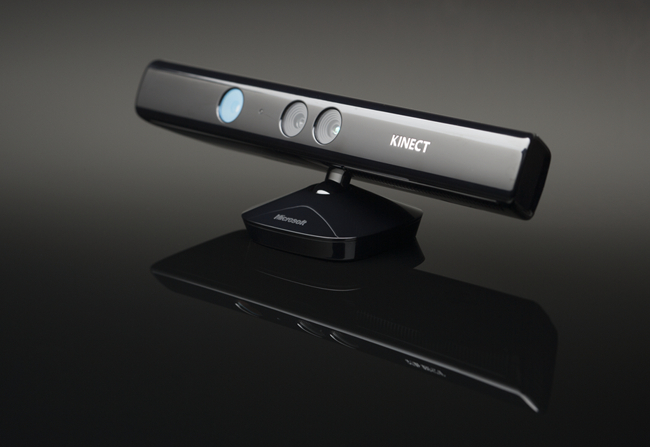Microsoft Ending Kinect For Windows v1 Sales In 2015
The Kinect for Windows team reported that sales for the first Kinect for Windows sensor will be phased out in 2015. That's because Microsoft released the second-generation model back in October, which offers new and improved features including 1080p video support, enhanced body tracking, an expanded field of view and more.
"The original Kinect for Windows sensor was a milestone achievement in the world of natural human computing," the blog stated. "It allowed developers to create solutions that broke through the old barriers of mouse and keyboard interactions, opening up entirely new commercial experiences in multiple industries, including retail, education, healthcare, education, and manufacturing."
According to Microsoft, the Kinect SDK 2.0 features an improved skeletal, hand and joint orientation and a "powerful" toolkit containing Kinect Studio, Visual Gesture Builder and Kinect Fusion. There's also simultaneous multi-app support, meaning multiple applications can simultaneously access one sensor. The SDK also boasts advanced face tracking including the ability to capture a face with a 2,000-point mesh.
"The response of the developer community to Kinect v2 has been tremendous: Every day we are seeing amazing apps built on the capabilities of the new sensor and SDK, and since we released a public beta of SDK 2.0 in July, the community has been telling us that porting their original solutions over to v2 is smoother and faster than expected," the blog stated. Currently, Windows Store only provides six applications that use the new Kinect sensor: 3D Builder, YAKiT, Fusion4D, Comparisons with Kaju, AhKonCha and Kinect Evolution.
In addition to releasing Kinect for Windows v2, Microsoft also launched the Kinect Adapter for Windows, which allows developers to use the Xbox One Kinect sensor on a Windows-based PC. This PC adapter requires a USB 3.0 connection, Windows 8/8.1 or Windows Embedded 8/8.1, a 64-bit processor with two cores, 2 GB of RAM and a graphics card that supports DirectX 11. This kit comes packed with an AC power supply, a USB 3.0 cable, a USB 3.0 hub and the AC power cords. This kit is rather inexpensive, costing a mere $49.
"We hope everyone will embrace the latest Kinect technology as soon as possible, but we understand that some business customers have commitments to the original sensor and SDK," the blog said. The team added that it will do its best to fill requests for the original sensor, but there will be no more v1 sensors manufactured after the current stock is depleted.
At one time, Microsoft indicated that Kinect would never come to the Windows desktop. Kinect went mainstream on the Xbox 360 back in November 2010 and didn't make an appearance on the Windows PC platform until February 2012. Microsoft launched v1.8 of the Kinect for Windows SDK on September 2013 before introducing the new v2 model earlier this year.
Get Tom's Hardware's best news and in-depth reviews, straight to your inbox.
"All of us on the Kinect for Windows team are grateful to all of you in the community who jumped on this technology and showed us what it could do," said the team.
Follow Kevin Parrish @exfileme. Follow us @tomshardware, on Facebook and on Google+.

Kevin Parrish has over a decade of experience as a writer, editor, and product tester. His work focused on computer hardware, networking equipment, smartphones, tablets, gaming consoles, and other internet-connected devices. His work has appeared in Tom's Hardware, Tom's Guide, Maximum PC, Digital Trends, Android Authority, How-To Geek, Lifewire, and others.
-
Draven35 Not surprised, but the Kinekt SDK for windows breaks some functions that older applications are using for some things, in addition to breaking support for multiple Kinekts on one PC, which makes it less useful to *me* for doing things like mocap.Reply -
Eggz I don't even understand why the Kinect v2 is offered at $200 for development. Shouldn't they be getting it out for free (or cheap) so people can makes apps that use it? You can't even put the Kinect in webcam mode without doing complicated workarounds. Potential's there, but it requires coding skills and free time to use. Womp!Reply
